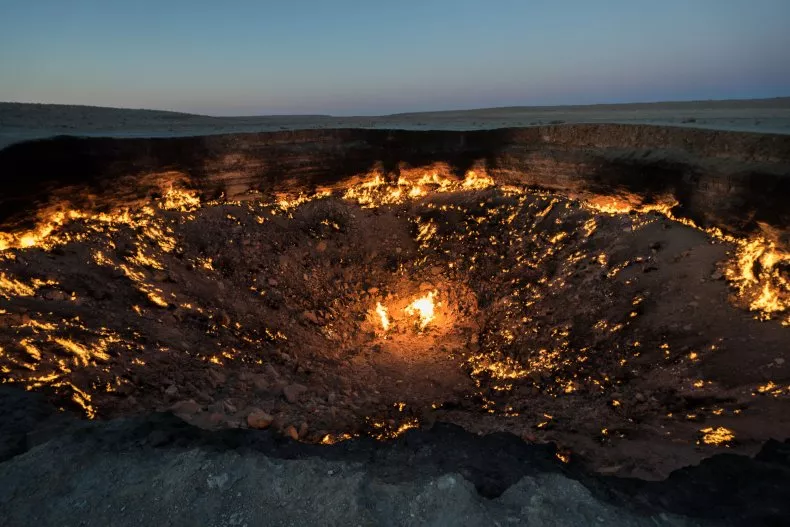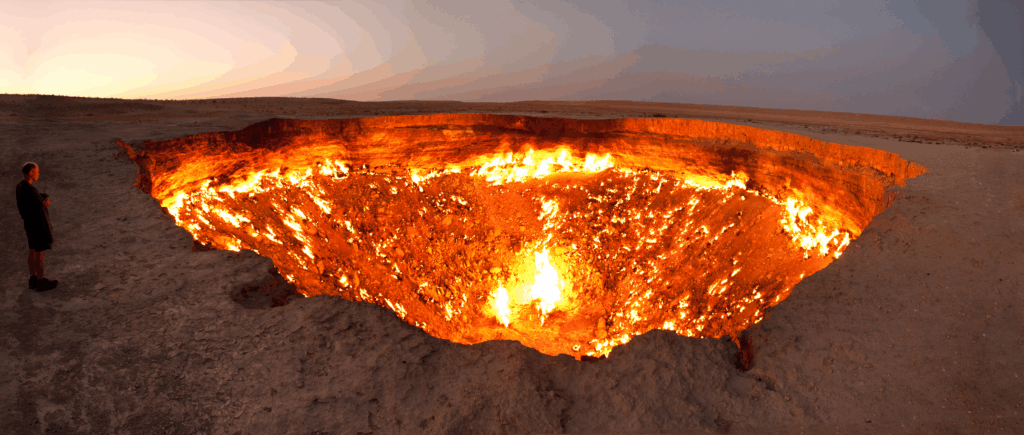Deep in the heart of the Karakum Desert in Turkmenistan lies a surreal and terrifying sight — a fiery pit known as the “Gateway to Hell.” Officially named the Darvaza gas crater, this massive burning hole has been alight for over five decades, drawing tourists, scientists, and conspiracy theorists alike.

Now, after years of speculation and environmental concern, experts are suggesting a radical solution: drilling directly into the crater to finally extinguish its never-ending flames.
The Darvaza crater was created in 1971 when a Soviet drilling operation accidentally tapped into a natural gas pocket, causing the ground to collapse and methane to leak uncontrollably. To prevent toxic gas from spreading, geologists set it on fire — assuming it would burn out in a matter of weeks.
But the fire never stopped.
More than 50 years later, the 230-foot-wide crater is still burning, releasing significant greenhouse gases and sparking new fears about long-term environmental impact. Recent satellite data suggests the crater may be affecting air quality and surrounding ecosystems in ways scientists are only beginning to understand.

A growing number of researchers and engineers now believe that drilling into the crater’s foundation could cut off the gas supply feeding the flames, potentially allowing the fire to be extinguished safely. However, the idea remains controversial — with skeptics warning that interfering with such an unstable geological feature could cause new collapses or uncontrolled gas eruptions.
As debates continue, the “Gateway to Hell” keeps blazing — a haunting symbol of human miscalculation and nature’s raw power.